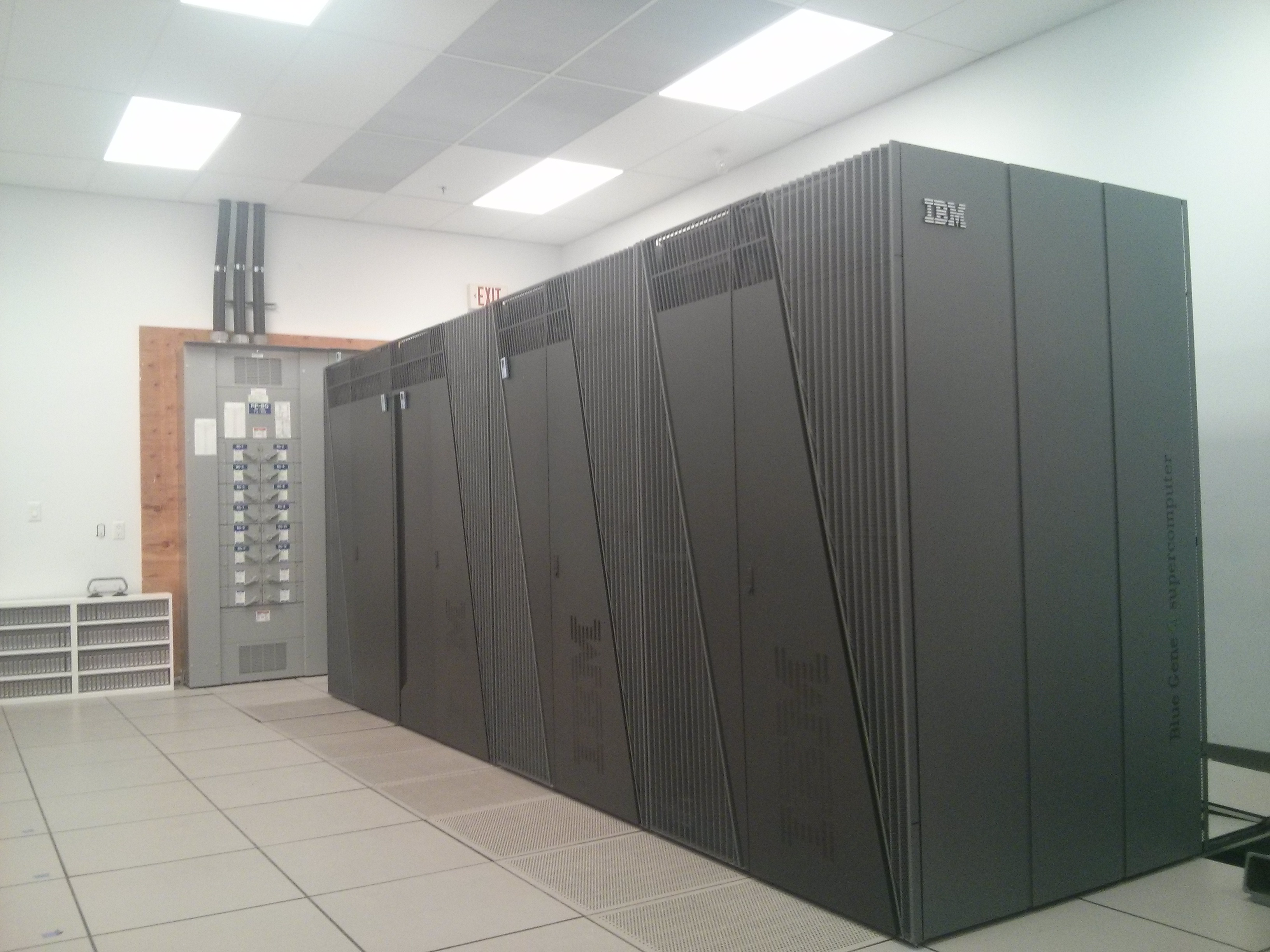
IBM Blue Gene/Q supercomputer being used by Li Ka Shing Institute of Virology scientists for health research
A partnership between the Li Ka Shing Institute of Virology (LKSIOV) and the Southern Ontario Smart Computing Innovation Platform (SOSCIP) is bringing about a new wave of medical research at the University of Alberta. The partnership, announced April 5, gives LKSIOV researchers access to Canada's fastest supercomputer.
"Our institute has invested in the application of 'supercomputational' science to medical science because we believe this is the future of drug discovery and development", said Michael Houghton, director of the Li Ka Shing Applied Virology Institute. "We believe that SOSCIP is an ideal partner for this endeavour, and we are very pleased to be working together."
Launched in 2012, SOSCIP is an Ontario-based collaborative research consortium, with 15 member academic institutions, Ontario Centres of Excellence and IBM Canada Ltd. as the lead industrial partner. SOSCIP brings together industry and academic researchers to support collaborative research projects in big data analytics and high-performance computing.
In 2012, SOSCIP installed a state-of-the-art IBM Blue Gene/Q supercomputer, which debuted as the 65th fastest computer in the world at the time. In early 2015, the group expanded its original 2.5 rack system by adding another full rack. At the same time, researchers at LKSIOV were interested in acquiring a small Blue Gene/Q system of their own. Rather than build a separate high-performance computing datacentre, LKSIOV and SOSCIP decided to partner together to build one very large Blue Gene/Q system to share. Today, the SOSCIP-LKSIOV Blue Gene/Q remains the fastest supercomputer in Canada with a full 4-rack system, 65,536 cores and capable of 840 Tflops peak theoretical performance. For comparison, the newest smartphones today have 8 cores.
Access to the supercomputer has enabled the LKSIOV to create a successful computational drug discovery program, a field pioneered by professor Jack Tuszynski of the University of Alberta's Faculty of Medicine & Dentistry over the last decade. One of the resulting technologies is a software that allows researchers to screen candidate chemicals through computer simulation in order to discard those predicted to block the hERG cardiac potassium channel. Blockage of this molecule can result in cardiotoxic effects-a common problem for drugs seeking regulatory approval.
In addition, the prediction of protein - protein interactions using a "supercomputational" approach, has also allowed the LKSIOV (alongside the Alberta Cancer Foundation with Dr. Khaled Barakat as the principal investigator) to discover small molecule inhibitors of immune checkpoints for the treatment of cancers. Immune checkpoint molecules play a key role in dampening cancer patients' immune systems and preventing the clearance of tumour cells. The computational modeling of these proteins is being used to develop small molecules that inhibit them, with the intention of reactivating the immune system to treat the cancer.
"This partnership provides an excellent example of the whole being greater than the sum of its parts," said Elissa Strome, executive director of SOSCIP. "Working together, we can deliver greater access for researchers to Canada's most powerful high-performance computing technologies and expertise."
IBM is also playing a critical role in the collaboration as the lead industrial partner of SOSCIP, providing extensive Blue Gene/Q technical and research expertise, and facilitating the SOSCIP-LKSIOV partnership by identifying the opportunity for the two groups to work together.
"IBM is very proud to have played a role in bringing these two groups together, to build a Blue Gene/Q platform that will help researchers in different regions of Canada drive innovation using high-performance computing," said Allen Lalonde, senior executive, IBM Canada Research and Development Centre.